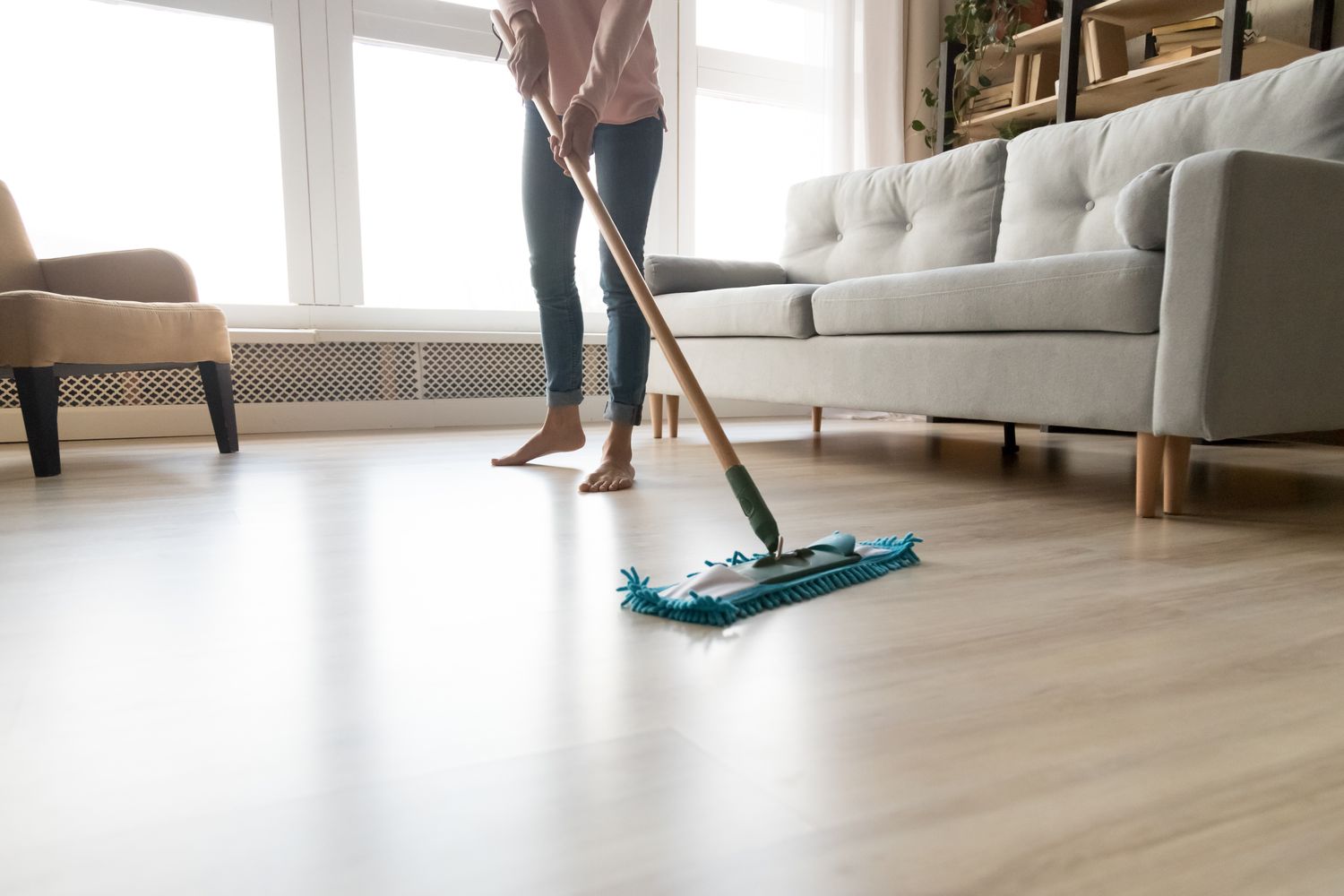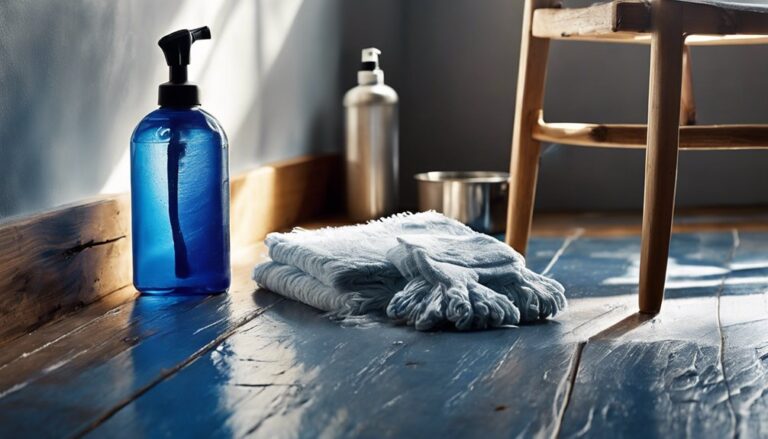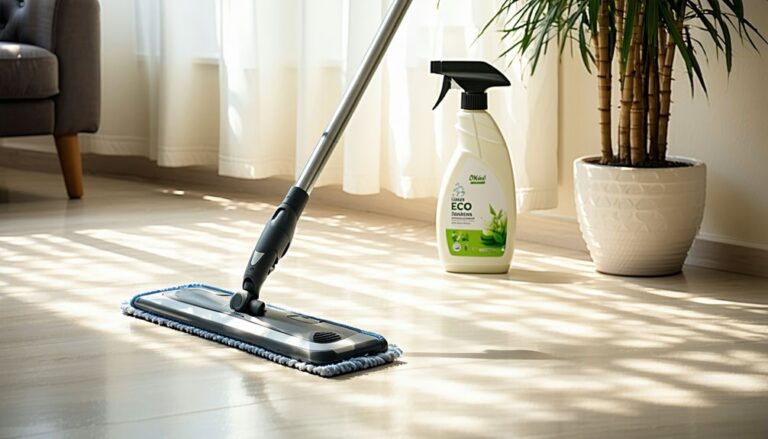Are your floors looking a little lackluster, and you’re wondering how often they need a good mop? You’re not alone.
Many people struggle to find the sweet spot between too often and not often enough. Mopping isn’t just about cleanliness; it’s about maintaining a healthy home environment and preserving the life of your flooring. But how do you know when it’s time to grab the mop?
We will unlock the secrets to determining the perfect mopping schedule tailored just for you. Stay with us, because by the end, you’ll have a clear, actionable plan that will keep your floors sparkling and your mind at ease.
Factors Influencing Mopping Frequency
Different floors need different care. Hartholzböden can be mopped once a week. Tile and vinyl floors may need more frequent cleaning. Moisture can damage some floors. Use the right cleaner for each type.
Busy homes need more cleaning. More people means more dirt. High traffic areas like kitchens need frequent mopping. Once or twice a week is good.
Pets bring in dirt and hair. Pet owners should mop more often. Twice a week helps keep floors clean. Watch for muddy paw prints.
Allergies can make life hard. Dust and pollen collect on floors. Mopping helps reduce allergens. Once a week is usually enough.

Different Floor Types
Hartholzböden need gentle care. Mop them once a week. Use a damp mop, not wet. Water can damage the wood. Clean spills right away. This keeps the wood safe. Polishing helps keep the shine.
Tile and stone floors are strong. Mop them twice a week. Use warm water and mild soap. Avoid harsh cleaners. They can harm the tiles. Rinse well to remove soap. Dry the floor to prevent slips.
Laminate floors need special care. Mop them every two weeks. Use a dry or barely damp mop. Water can make them swell. Clean spills quickly. This stops stains and damage. Use laminate-safe cleaners.
Vinylböden are easy to clean. Mop them once a week. Use a gentle cleaner. Avoid strong chemicals. They can discolor the vinyl. Rinse the floor well. Dry it to avoid slipping.
Carpets don’t need mopping. Vacuum them twice a week. This keeps them clean and fresh. Use a carpet cleaner for deep stains. Clean spills fast. It stops stains from setting. Rotate rugs often.
Seasonal Considerations
Adjust mopping frequency based on seasons. Spring and summer may require more frequent cleaning due to increased dust. Winter demands less but still regular maintenance to tackle mud and snow. Aim for weekly or bi-weekly mopping to keep floors clean year-round.
Spring And Summer
During spring and summer, Böden can get dusty Und pollen-covered. Open windows mean more dirt. Mop your floors once a week. This keeps them clean and fresh. If you have pets, you may need to mop more. Their paws bring in extra dirt. A clean floor helps you breathe better.
Fall And Winter
In fall and winter, floors deal with mud Und snow. Muddy boots make a mess. Mop twice a month to keep floors neat. Pay attention to entrance areas. They get dirty faster. Use a mat at the door. This traps dirt before it spreads. Wet floors can be slippery. Mop them dry to avoid falls.
Signs You Need To Mop
Stains and sticky spots are clear signs that mopping is needed. Dirty floors can harbor germs and allergens. Regular mopping keeps your home clean and healthy, ensuring a fresh feel underfoot.
Visible Dirt And Stains
Floors with dirt look messy. Stains make them worse. Dust gathers quickly. It looks bad and hides germs. Stains are ugly and hard to clean. They need special attention. Regular mopping keeps floors clean. Clean floors are healthy and safe.
Unpleasant Odors
Bad smells come from dirty floors. Spills and food stains cause odors. Moisture can lead to mold and stink. Mopping removes bad smells. Fresh floors feel nice and clean. Clean floors make rooms smell better.
Sticky Or Slippery Surfaces
Sticky floors are annoying. Spills make them sticky. Slippery floors are dangerous. Wasser and oil cause slippery spots. Mopping helps fix both problems. Safe floors prevent falls and accidents. Mopping keeps surfaces smooth.
Mopping Techniques
Traditional mopping is a common way to clean floors. It involves a mop and a bucket of water. Add some cleaning solution to the water. Dip the mop into the bucket and then wring it out. Make sure the mop is not too wet. Move the mop back and forth across the floor. This helps to remove dirt and stains. Remember to rinse the mop regularly. Change the water if it gets too dirty. This method is simple and effective for most floors.
Steam mopping uses hot steam to clean floors. It is ideal for killing germs and bacteria. Fill the steam mop with water. Plug it in and wait for it to heat up. Once ready, glide it over the floor. The steam loosens dirt, making it easy to wipe away. No need for chemicals or detergents. This method is great for deep cleaning. It also dries quickly.
Microfiber mops are a modern choice for cleaning floors. They use microfiber pads to trap dirt and dust. Wet the pad with water or a cleaner. Use the mop to sweep across the floor. The fibers grab tiny particles. This makes them highly effective. They are gentle on floors, even hardwood. Pads are washable and reusable. This method is eco-friendly and easy to use.

Tools And Products
Picking the right mop is very important. A Mikrofasermopp works well on most floors. For a big space, a spin mop is handy. It helps clean faster. A sponge mop is good for small spills. Make sure the mop is easy to use. Pick a mop with a long handle. It helps to reach far places. Always keep your mop clean after use.
Verwenden warm water for cleaning. It removes dirt better. Add a bit of floor cleaner to the water. It helps to clean well. Make sure the cleaner is safe for your floor type. Read the label before using it. Do not use too much cleaner. It can leave a sticky layer. A little goes a long way.
Essig is a good natural cleaner. Mix it with water. Use it on floors that can handle it. Backpulver is also a friend to floors. It helps remove stains. These options are safe Und green. They do not harm nature. Plus, they are easy to find. Keep your home clean and green.
Maintaining Clean Floors
Fegen helps remove dirt and dust every day. Staubsaugen is best for carpets and rugs. It picks up tiny particles. Do this once or twice a week. Clean floors make your home feel fresh. Dirt can scratch floors, so remove it often. Keep a regular schedule for best results.
Door mats catch dirt before it enters the home. Place them at every entrance. Clean them regularly to keep them effective. They are easy to shake and wash. This simple step keeps floors cleaner for longer. They also add a touch of style to your home.
Shoes bring outside dirt inside. A no-shoes policy keeps floors cleaner. Ask guests to remove shoes at the door. Provide slippers or socks for comfort. This habit reduces dirt and germs in the home. It also protects floors from scratches.
Common Mistakes To Avoid
Wet floors can get damaged easily. Too much water can make wood floors swell. Tiles might get slippery when too wet. Use a damp mop, not a soaking one. Always make sure to squeeze out extra water. Your floors will thank you.
Strong chemicals can harm floors. They might fade colors or leave spots. Mild soap and water work well for most surfaces. Check labels before using any cleaner. Safer choices are better for your floors.
Dirty rinse water can spread more dirt. Always change the water when it looks murky. Clean rinse water helps floors stay shiny. Fresh water means cleaner floors every time.

Häufig gestellte Fragen
How Often Should You Mop Your Floors?
Mop your floors once a week for best results. However, high-traffic areas may need more frequent cleaning. Consider factors like pets, kids, and allergies. Regular mopping keeps floors hygienic and looking fresh. Adjust frequency based on your lifestyle and floor type.
Is Mopping Frequency Different For Tile Floors?
Yes, tile floors require different care than other surfaces. They can handle more frequent mopping, especially in kitchens and bathrooms. Use a gentle cleaner to avoid damage. Regular mopping prevents grime buildup and keeps tiles shiny. Always follow manufacturer guidelines for cleaning.
Can Over-mopping Damage Floors?
Over-mopping can damage certain floor types. Hardwood and laminate floors can warp if exposed to excess water. Use a damp mop, not soaking wet, for these surfaces. Proper drying after mopping minimizes potential damage. Always check your floor’s care instructions to avoid issues.
How Does Lifestyle Affect Mopping Frequency?
Your lifestyle greatly impacts mopping needs. Homes with pets or kids require frequent mopping due to increased dirt. Allergies may necessitate more regular cleaning to reduce allergens. Busy households often need more maintenance. Tailor your routine to your specific lifestyle for optimal cleanliness.
Abschluss
Keeping floors clean is essential for a healthy home. Regular mopping prevents dirt buildup and protects surfaces. Frequency depends on foot traffic and floor type. High-traffic areas might need weekly attention. Less-used rooms can be mopped monthly. Choose the right cleaning tools for your floors.
A microfiber mop works well for most surfaces. Use gentle cleaners to avoid damage. Remember, consistent cleaning keeps floors looking great. It also extends their lifespan. Adjust your mopping routine based on your lifestyle. A clean floor is a happy floor.
Keep it fresh and welcoming. Your home will thank you.




